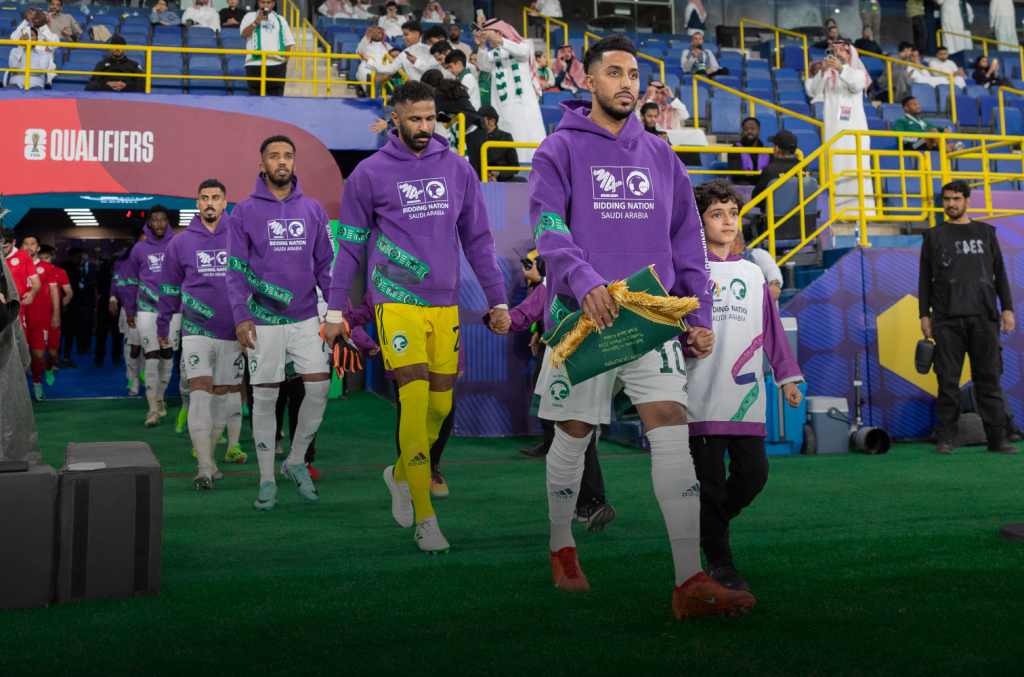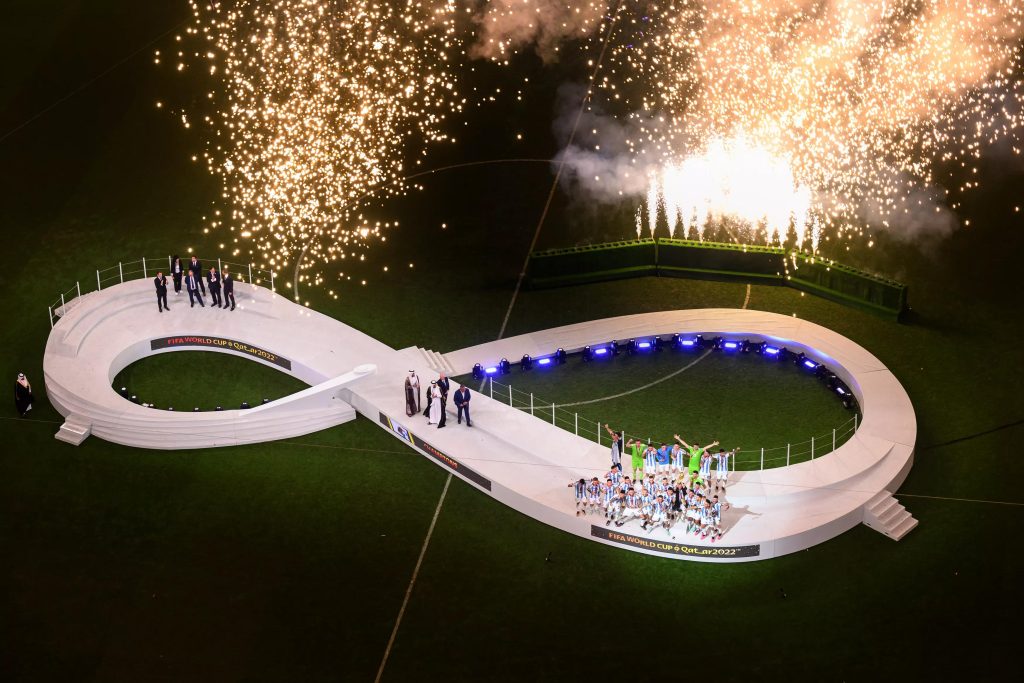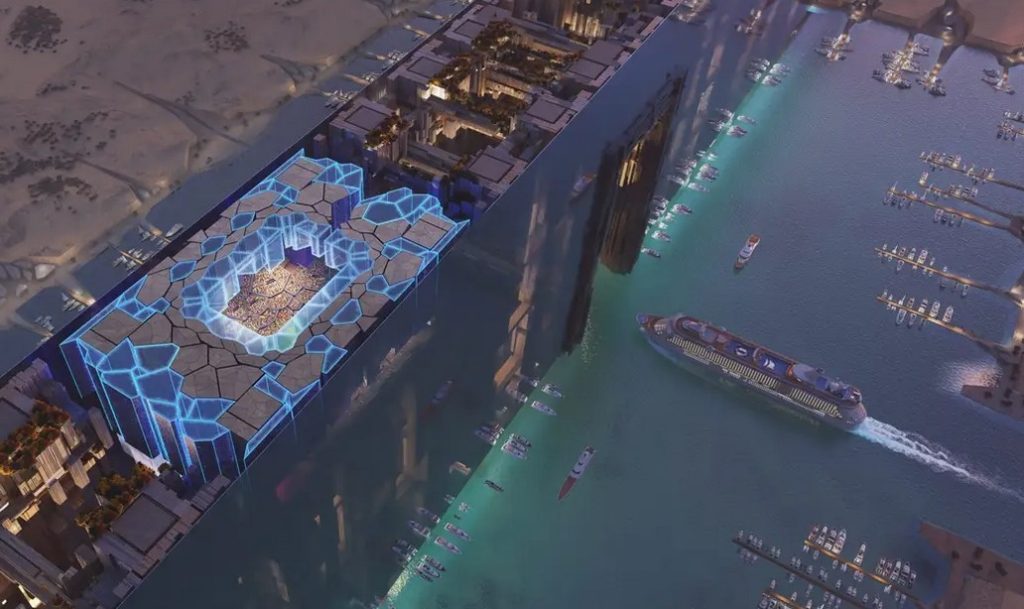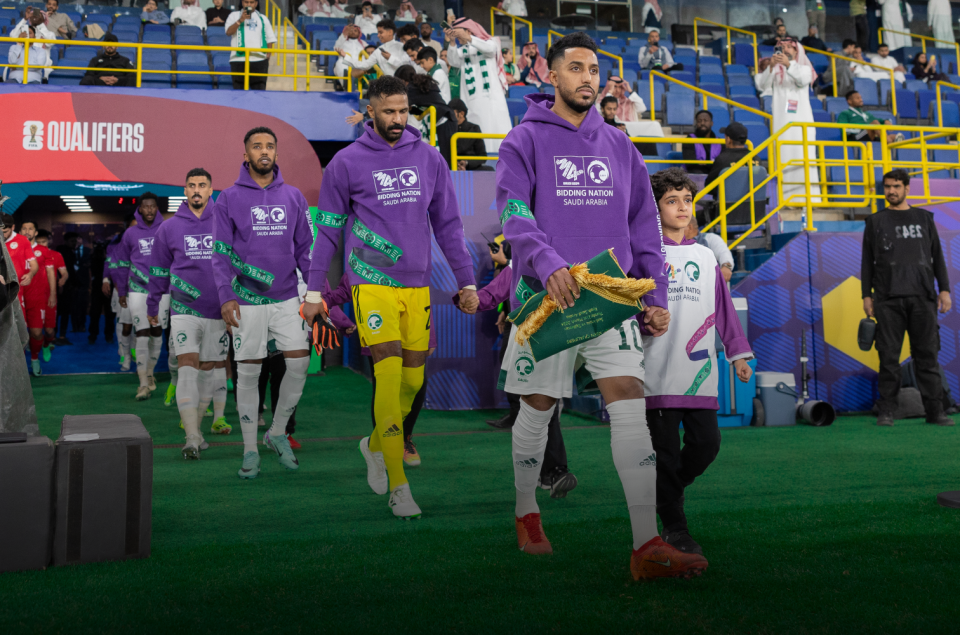Football isn’t just a game. It’s a global heartbeat. And according to a new white paper by JLL, Beyond the Whistle, the FIFA World Cup 2034 will do far more than crown a new world champion. It is set to transform Saudi Arabia’s hospitality sector, accelerate foreign investment, and showcase a nation in the midst of extraordinary change.
With billions of fans watching and a record 48 teams competing over just 45 days, this will be a tournament like no other, both on and off the pitch.

Global stage for a global ambition
JLL’s research highlights how major sporting events can act as powerful economic catalysts. The Kingdom is already well on its way. Since 2018, it has hosted more than 100 international competitions, from Formula 1 and world-title boxing bouts to the FIFA Club World Cup 2023 and the Spanish & Italian Super Cups.
Next, a glittering calendar that includes the AFC Asian Cup 2027, Asian Winter Games 2029, and the Asian Games 2034, each one reinforcing Saudi Arabia’s emergence as a major sports and tourism hub.
> “Hosting the FIFA World Cup 2034™ will be a unique opportunity to showcase Saudi Arabia’s thriving hospitality sector,” says **Hammad Albalawi**. “Our compact tournament, with five diverse host cities, will offer fans unforgettable experiences and a festival-like atmosphere.”
A Kingdom perfectly placed
Saudi Arabia’s geographic position is one of its secret weapons, with 60% of the world’s population within eight hours’ flight. With airport capacity set to reach 300 million passengers by 2030, connectivity will be seamless.
Each of the five host cities tells a different story of Saudi culture and ambition:
- Riyadh is the capital of transformation, where desert dunes meet skyscrapers.
- Jeddah is the cosmopolitan gateway to the Red Sea.
- Dammam connects the Arabian Gulf’s energy and enterprise.
- Abha is where the lush highlands of Asir offer year-round appeal.
- NEOM is the futuristic frontier redefining sustainability and luxury.
Together, they form a living map of Vision 2030 in action.
Lessons from Qatar, and why Saudi will go bigger

JLL’s white paper draws lessons from the Qatar 2022 FIFA World Cup, where more than 2.5 million international visitors generated 6.6 million room nights and sent hotel rates soaring by nearly 100% year-on-year.
Qatar’s success story didn’t end when the final whistle blew. According to UN Tourism, international arrivals to Qatar continued to climb, up 138% by 2024, proving how such mega-events create a lasting tourism legacy.
Saudi Arabia is preparing for an even larger wave. The “Bid Book” proposes 132 four- and five-star hotels across 15 cities for teams and officials with around 69% already operational, and the rest on track for completion well ahead of 2034.
“Hafawah” – The heartbeat of Saudi Hospitality
At the core of Saudi Arabia’s World Cup vision is hafawah, the Kingdom’s distinct spirit of warmth and generosity.
“We want every visitor, no matter their budget, to have an exceptional experience that reflects our deep-rooted culture of hospitality,” says Hammad Albalawi, Head of the Saudi Arabian Football Federation FIFA World Cup 2034 bid unit.
From ultra-luxury resorts to eco-lodges and heritage hotels, Saudi’s accommodation mix is expanding fast. The Ministry of Tourism has rolled out ten official accommodation categories, including holiday homes, boutique hotels, heritage stays and pop-up facilities to ensure consistent quality and innovation across the board.
Riyadh and Jeddah lead the charge
With more than 22,700 hotel rooms and an annual growth rate of 6%, Riyadh’s hospitality market is booming. New developments such as King Abdullah Financial District, King Salman Park, and New Murabba Stadium are redefining the city skyline. Events like Riyadh Season and Boulevard Riyadh have also helped shift the market from corporate to leisure-driven demand.
Jeddah’s hotel supply of 20,500 rooms will reach 30,000 by 2030, bolstered by the Jeddah Central Development Stadium and the city’s expanding northern corridor. With 63% occupancy and an ADR of SAR 775, Jeddah is well-positioned as the leisure hub of the west coast.
A surge of global confidence
“Investors are seeing the momentum and realising the scale of opportunity in a market that is transforming at an unmatched pace,” says Albalawi. “Saudi Arabia recorded a 56% increase in international tourist arrivals in 2023 compared to 2019.”
The white paper notes that foreign direct investment (FDI) in hospitality is surging, driven by the expansion of global hotel brands and Saudi’s strategic infrastructure push, from new international airports and high-speed rail to urban megaprojects such as Diriyah, Qiddiya, and The Red Sea.
Abha and NEOM in the spotlight

While Riyadh, Jeddah, and Al Khobar remain key hubs, JLL’s analysis highlights Abha and NEOM as under-explored frontiers for investors:
- Abha offers natural beauty, cool mountain air and strong potential for eco-resorts, wellness retreats, and cultural tourism.
- NEOM is the ultimate testbed for innovation, where sustainability, technology, and luxury create entirely new hospitality concepts.
Both are expected to play starring roles in shaping the Kingdom’s tourism legacy long after 2034.
Mind the (talent) gap
One challenge identified in the JLL report is the need to attract and train local talent in tourism and hospitality. As Albalawi notes, “The country must continue promoting this industry to its youth and incentivise investors who actively contribute to Saudisation.”
With programmes already under way to professionalise the sector, the next decade could see Saudi nationals leading the charge in hotels, F&B, and destination management.
“By 2034, Saudi Arabia will be one of the world’s most exciting travel destinations,” predicts Albalawi. “Visitors will experience genuine warmth — this is a country that makes guests feel at home.”
Tourism already contributes 4.4% of GDP, up from 3.8% just four years ago. Having already surpassed its 100 million-visitor Vision 2030 target seven years early, the Kingdom is now aiming for 150 million annual visitors.
The FIFA World Cup 2034 won’t just be a sporting milestone, it will be the catalyst for a generational shift in how the world experiences Saudi Arabia, that is a nation of open doors, open hearts, and limitless potential.



